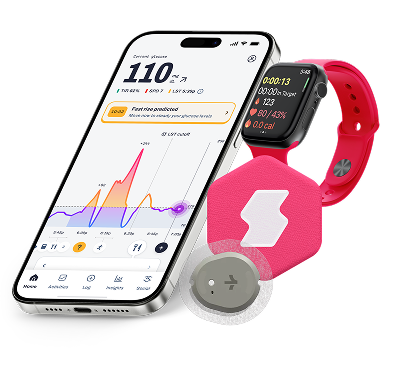Halloween is just around the corner, and the temptation of sweet treats can be hard to resist. We're putting your favorite candies head-to-head in Signos’ Candy Battle series to help you navigate this spooky season.



Payday vs. 3 Musketeers Overview
In the first matchup, it's Payday vs. 3 Musketeers!
Payday
Payday, famous for its hearty peanut center, packs 7 grams of protein and 2 grams of fiber. Dietary fiber can help keep blood sugar levels in check by slowing the absorption of sugar from the intestine. This is not only helpful for people with diabetes or prediabetes, but for anyone interested in keeping blood sugar stable.
While Payday does offer some benefits, this candy bar still contains added sugars that can impact your blood sugar.
3 Musketeers
Meet its opponent, 3 Musketeers, with its fluffy nougat core. Unfortunately, it contains a significant amount of hydrogenated oils, also known as trans fats, which aren't great for heart health. Trans fats have no known health benefits and there is no safe level of consumption.
While this candy contains less fat than Payday, it does contain significantly more carbs and sugar.
Sweet Victory
In the first showdown, Payday emerges as the victor due to its higher protein and fiber content. Enjoy it in moderation, keeping an eye on added sugars.
As Halloween night creeps closer, make informed treat choices by balancing protein, fiber, and fats for blood sugar stability. Be on the lookout for more epic candy showdowns and expert tips to sweeten your journey to better health!
Pro Tip: Opt for Fruit
Often called nature’s candy, fruit can help satisfy even the most stubborn sweet tooths. Low-glycemic index (low GI) fruits contain less fructose (a naturally occurring sugar found in fruits) than others. They are rich in fiber, slowing digestion and decreasing the risk of “peaks and valleys” in your bloodstream.
Frequent swings in your blood sugar levels can leave you feeling physically and mentally exhausted. The high fiber content contributes to bathroom regularity, heart health protection, reduced risk of certain cancers, and satiety.
Try dipping strawberries or apples in dark chocolate this Halloween if you want a healthy substitute.
Sign up to be the first to know about special offers and exciting Signos news.


.svg)
.svg)
.svg)
.svg)
.svg)
.svg)
.svg)
.svg)
